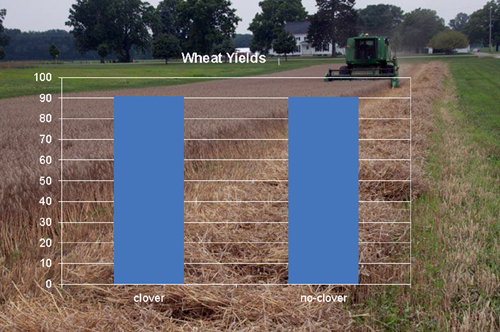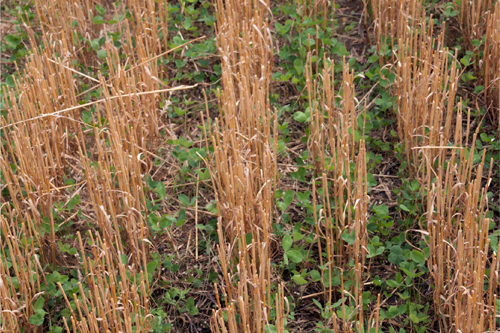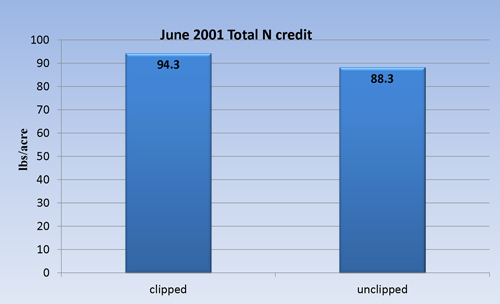Now is the time to seed red clover into wheat
Save money and make your own nitrogen by seeding red clover into your wheat.
Are you growing wheat this year? Have you considered seeding red clover into your wheat? In 2011, we conducted a study comparing frost seeded red clover to no red clover in wheat. We had very good yields of 90 bu/A and the red clover did not reduce the wheat yield (Figure 1). Figure 2 shows a good stand of frost seeded red clover in wheat stubble.

Figure 1. Wheat yields with and without red clover.

Figure 2. Frost seeded red clover in wheat stubble following wheat harvest 2011.
I’m sure you are asking, “Why should I seed red clover in my wheat?” A good stand of red clover can provide a significant amount of nitrogen for next year’s crop. Our research indicates that frost seeding red clover into wheat can provide up to 90 lbs. of nitrogen per acre when controlled in the spring. In this same study, we compared clipping and removing red clover top-growth to unclipped red clover. We took nitrate samples in the spring comparing these two systems. Actually clipping and removing the red clover biomass in the fall resulted in continued growth and higher nitrogen values as compared to unclipped red clover (Figure 3).

Figure 3. N credit for clipped and unclipped red clover frost seeded into wheat.
One of the challenges if you seed red clover into your wheat is that you cannot use herbicides for weed control. That is why I’m encouraging you to seed your fields as soon as possible to help suppress weeds.
Seeding red clover can be a profitable exercise for your farming operation. We all know that nitrogen prices are rising. Therefore, why not make your own nitrogen on your farm. Not only are you keeping your ground covered, you’re putting money back into your pocket.



 Print
Print Email
Email


